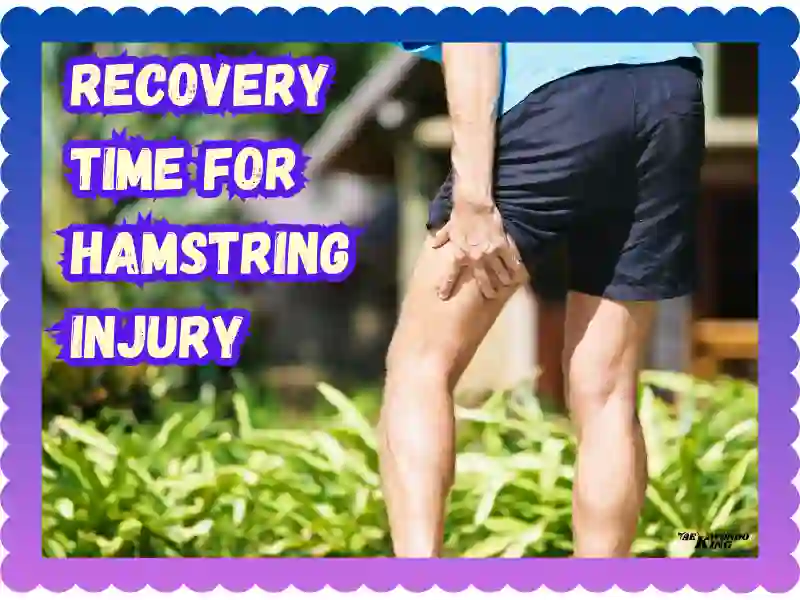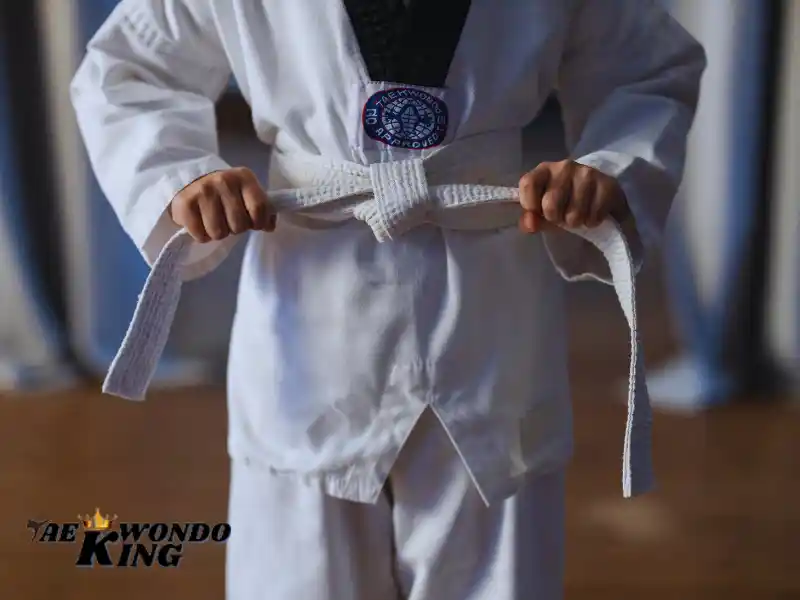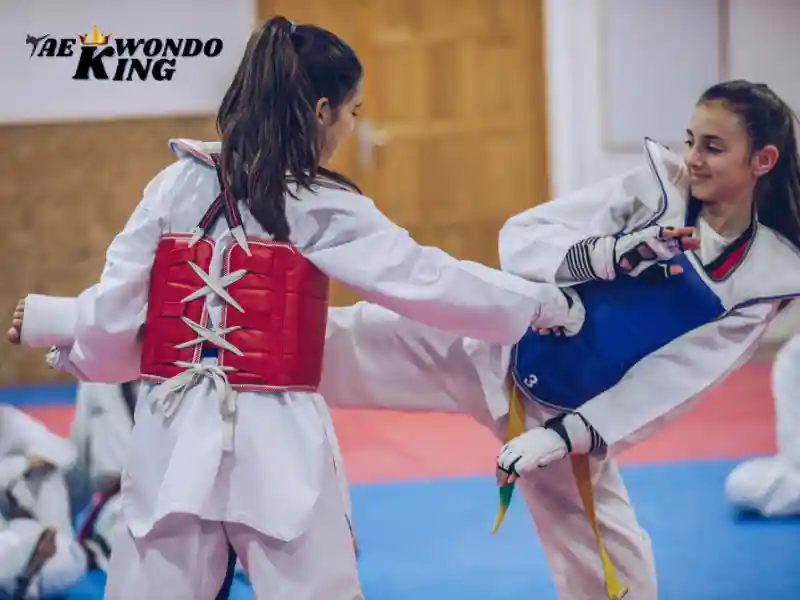
Tearing my hamstring during a pickup basketball game in Miami felt like hitting a wall at full speed. At first, I had no clue what the recovery time for hamstring injury would really look like , I just knew I couldn’t even walk straight. After going through weeks of ups and downs, I learned a lot about patience, healing, and listening to my body. Let me share what I found out, so you can recover smarter and faster too.

Understanding Hamstring Injuries
The hamstring muscles are located at the back of the thigh. They help in running, jumping, and bending the knee. Hamstring injuries happen when these muscles are overstretched or torn. It can range from a mild strain to a severe tear. Recovery time for a hamstring injury depends on the severity. Mild injuries heal faster. Severe injuries take longer.
A hamstring injury can be painful and frustrating. If it’s a pulled hamstring, hamstring strain, or a complete tear, recovery takes time. The recovery time for a hamstring injury depends on severity, treatment, and rehabilitation. Proper care helps you heal faster and prevents future hamstring injuries.
Types of Hamstring Injuries
- Mild Hamstring Injuries (Grade 1 Strain): Small muscle tears with mild pain.
- Partial Muscle Tears (Grade 2): Moderate pain with swelling and difficulty walking.
- Complete Muscle Tears (Grade 3): Severe pain with muscle weakness and bruising.
How Long Does It Take to Recover?
The recovery time for a hamstring injury varies. It depends on the injury’s severity, treatment, and rehabilitation.
| Injury Type | Recovery Time |
|---|---|
| Mild Hamstring Strains | 1–2 weeks |
| Partial Muscle Tears | 3–6 weeks |
| Complete Muscle Tears | Several months |
Symptoms of a Hamstring Injury
- Sudden hamstring tears cause sharp pain.
- Swelling and bruising appear within hours.
- Difficulty walking or bending the knee.
- Weakness in the hamstring muscles.
If you experience these injury symptoms, seek medical help.
Find a Sports Medicine Specialist Near You

Risk Factors for Hamstring Injuries
Certain conditions increase the risk of a pulled hamstring muscle:
- Previous hamstring injuries weaken the muscle.
- Overuse injuries from repetitive movements.
- Poor flexibility increases strain on the muscles.
- Sports injuries from sprinting or jumping.
Treatment for Hamstring Injury
Proper injury treatment speeds up the recovery time for hamstring injury.
Home Remedies
For mild hamstring strains, use the RICE method:
- Rest: Avoid activities that strain the muscle.
- Ice: Apply ice packs for 20 minutes every few hours.
- Compression: Wrap the injured area with a bandage.
- Elevation: Keep the leg elevated to reduce swelling.
Get Professional Hamstring Injury Treatment
Physical Therapy for Hamstring Injuries
Physical therapy helps restore strength and flexibility. Sports medicine specialists recommend:
- Stretching exercises for flexibility.
- Strength training to rebuild muscle.
- Massage therapy for muscle relaxation.
When to See a Doctor?
Seek medical attention if:
- Pain worsens despite home care.
- You have trouble walking.
- You suspect a complete muscle tear.
Injury Recovery and Rehabilitation
Rehabilitation plays a crucial role in reducing recovery time for hamstring injury. The care hospitals and healthcare providers offer treatments based on the severity. Prevent Hamstring Injuries – Learn More!
Rehabilitation Stages
- Early Stage (Rest and Pain Management)
- Mid Stage (Gentle stretching and mobility exercises)
- Final Stage (Strength training and gradual return to activity)
Treatment for Hamstring Injury
Treatment for hamstring injury depends on the severity. Here are some common treatments:
Rest
Rest is crucial for healing. Avoid activities that strain the muscles.
Ice
Ice reduces swelling and pain. Apply ice for 20 minutes several times a day.
Compression
Compression helps reduce swelling. Use an elastic bandage.
Elevation
Elevation reduces swelling. Keep the leg raised above heart level.
Physical Therapy
Physical therapy helps restore strength and flexibility. Follow a therapist’s guidance.
Find a Sports Medicine Specialist Near You

Preventing Future Hamstring Injuries
To avoid sports hamstring injuries, follow these tips:
- Warm-up properly before activities.
- Strengthen the hamstrings with targeted exercises.
- Improve flexibility with regular stretching.
- Avoid sudden movements that strain muscles.
Severe Injuries and Surgery
In extreme cases, injury surgery is required for complete muscle tears. Sports medicine specialists may recommend:
- Hamstring repair surgery for torn muscles.
- Rehabilitation programs for full recovery.
Exercises for Hamstring Recovery
Exercises help in recovery. Start Your Recovery Plan Today! Here are some effective ones:
Hamstring Stretch
Stretch the hamstring muscles gently. Hold for 20–30 seconds.
Bridge Exercise
Lie on your back with your knees bent. Lift your hips off the ground. Hold for a few seconds.
Leg Curls
Use a resistance band or machine. Curl your leg towards your buttocks.
Step-Ups
Step onto a low platform with one leg. Step down and repeat.
Walking Lunges
Take a step forward and lower your body. Push back up and repeat.

Tips for Faster Recovery
Here are some tips for faster recovery:
Follow Doctor’s Advice
Follow your doctor’s advice. Don’t rush the recovery process.
Stay Active
Stay active within limits. Gentle movement promotes healing.
Eat Healthy
Eat a healthy diet. Proper nutrition supports recovery.
Stay Hydrated
Stay hydrated. Water helps in muscle repair.
Get Enough Sleep
Get enough sleep. Rest is crucial for healing. Contact a Healthcare Provider Now
Common Mistakes During Recovery
Here are some common mistakes to avoid:
Rushing Recovery
Don’t rush the recovery process. This can lead to re-injury.
Ignoring Pain
Don’t ignore pain. Pain is a sign of slowing down.
Skipping Physical Therapy
Don’t skip physical therapy. It is crucial for a full recovery.
Overdoing Exercises
Don’t overdo exercises. Follow a gradual progression.
Neglecting Prevention
Don’t neglect prevention. Strengthen and stretch regularly. Prevent Hamstring Injuries – Learn More!
Final Thoughts
Recovery time for hamstring injury varies. It depends on the severity of the injury. Mild strains heal in 1–2 weeks. Severe tears can take 3–6 months. Proper treatment and prevention are key.
The recovery time for a hamstring injury depends on the injury’s severity and treatment. Proper care, physical therapy, and rehabilitation help you return to a normal life. If you have a painful hamstring injury, follow expert advice to heal safely.
Follow the tips in this article for a faster recovery. Rest, ice, and physical therapy are important. Strengthen and stretch to prevent future injuries. With patience and care, you can heal and return to normal activities. Start Your Recovery Plan Today!
So, take the first step. Start your recovery journey today. Follow your doctor’s advice and stay consistent. Recovery time for a hamstring injury may be long, but with the right approach, you can heal and thrive.

Frequently Asked Questions (FAQs)
How do I know if I have a hamstring tear?
If you feel a sudden sharp pain and swelling, you may have a hamstring tear.
Can I walk with a pulled hamstring?
Yes, but avoid putting too much pressure on the muscle.
What’s the fastest way to recover from a hamstring injury?
Rest, physical therapy, and hamstring injury treatment speed up healing.
Should I see a doctor for a hamstring strain?
If the pain is severe or you can’t walk, see a healthcare provider.
How can I prevent future hamstring injuries?
Stretch regularly, strengthen your muscles, and avoid sudden movements.
Get Professional Hamstring Injury Treatment


Founder, Owner, and CEO of TaekwondoKing.
He is one of the top 100 martial artists in the World and among the top 20 referees in Bangladesh.
Ehatasamul Alom is an esteemed Kukkiwon Certified Taekwondo 3rd Dan Black Belt with over 15 years of experience in this dynamic martial art. Born in Rajshahi, Bangladesh, Ehatasamul’s journey with Taekwondo began at the tender age of seven. His passion led him to compete at national and international levels, where he has bagged numerous awards and honors. He is also a member of the Taekwondo National Referee Panel.
With a Bachelor’s degree in Sports Science from the prestigious Rajshahi University, Ehatasamul has a deep understanding of the technical and scientific aspects of martial arts and some other martial arts.
In 2022, Ehatasamul created the “TaekwondoKing.com” to share his knowledge, Free Resources, Values, and Real experiences. His articles focus on Taekwondo training techniques, competition strategies, Sport Products Reviews, and the art’s rich history and philosophy. He also writes about the importance of mental fortitude and discipline, key aspects of his teaching philosophy. He has already launched many sports, Taekwondo, and health-related Free online tools. His goal is to inspire both beginners and seasoned practitioners worldwide through insightful and engaging content.
If you need any help, contact Ehatasamul Alom at any time.




